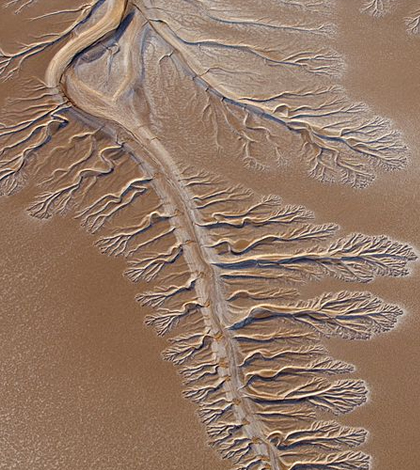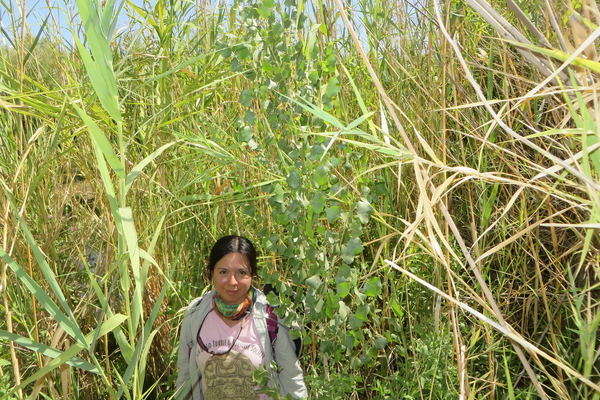Pulse Flow Brings Colorado River Delta Big Benefits

A dry Colorado River Delta in the Sonoran Desert of Baja California and Sonora, Mexico, about 5 miles north of the Gulf of California. (Credit: Pete McBride / U.S. Geological Survey)
A few years ago, a pulse flow was released into the Colorado River Delta per Minute 319 of the U.S.-Mexico Water Treaty of 1944. The flow began March 23, 2014 and ended on May 18, 2014, pushing around 130 million cubic meters of water downstream. A few months after that, this magazine checked in with some of the scientists involved in monitoring the effects of the pulse flow.
Investigators told us they had deployed more than 100 piezometers to study groundwater levels. Flow trackers were giving them discharge data and measurements on salinity were being gathered with conductivity probes. For gauging the impacts to waterfowl, the researchers were using stereos to send out mating calls while listening for responses.
But there was so much more data collection underway than we knew. In a new report, released by the International Boundary and Water Commission, those involved with the pulse flow effort document other monitoring efforts used over the two-year study period.
They include taking LIDAR measurements both before and after the pulse flow to document changes to topography that impacted vegetation; collecting sediment samples to estimate erosion and deposition; and gathering images of the Colorado River Delta before, during and six months following the flow. To see the full list of methods, see the report’s Executive Summary. Some of them, like groundwater monitoring, are still underway.

Martha Gómez Sapiens, a monitoring team member and postdoctoral research associate in the University of Arizona Department of Geosciences, stands on a riverbank next to willows and cottonwoods that germinated following the pulse flow. (Credit: Karl Flessa / University of Arizona)
The report also lays out many of the beneficial effects that have been seen in the Colorado River Delta.
Bird life responded to the post-flood burgeoning of vegetation, and bird diversity is still higher than before, the monitoring team reports. Migratory waterbirds, nesting waterbirds and nesting riparian birds all increased in abundance.
The abundance of 19 bird species of conservation concern, including vermillion flycatchers, hooded orioles and yellow-breasted chats, was 43 percent higher at the restoration sites than at other sites in the floodplain, the monitoring team found.
Some of the water from the pulse flow and subsequent smaller environmental flows recharged the groundwater, which had both ecological and social benefits. Local farmers were happy because the aquifers they depend on got healthier. Vegetation greened up in areas that received surface water and also in some areas that did not.
After clearing out invasive tamarisk, scientists have also seen a resurgence in native plants. Cottonwood and willow seeds that germinated after the pulse flow have become trees 10 to 13 feet tall. The flow helped reduce soil salinity, an unexpected find, which has helped to make conditions more favorable for native plants.
It’s amazing that it only took two months of river flow to achieve such impacts. Scientists say that the pulse flow is proof that it only takes a small amount of water to do a lot of environmental good.
Top image: A dry Colorado River Delta in the Sonoran Desert of Baja California and Sonora, Mexico, about 5 miles north of the Gulf of California. (Credit: Pete McBride / U.S. Geological Survey)




Jim Amon
November 4, 2016 at 4:12 pm
Dan, some interesting stuff in the Pulse article! Could I get permission to include part of it in an upcoming issue of the Beaver Creek Wetlands Association newsletter? We could credit you and Martha Gómez Sapiens or others in the article.I might wish to talk this over with you at your convenience.
Jim
Daniel Kelly
November 7, 2016 at 4:04 pm
Hi Jim, thanks for reading. You may use the article as needed for the upcoming newsletter. We just ask that you credit as follows:
(Credit: Fondriest Environmental)